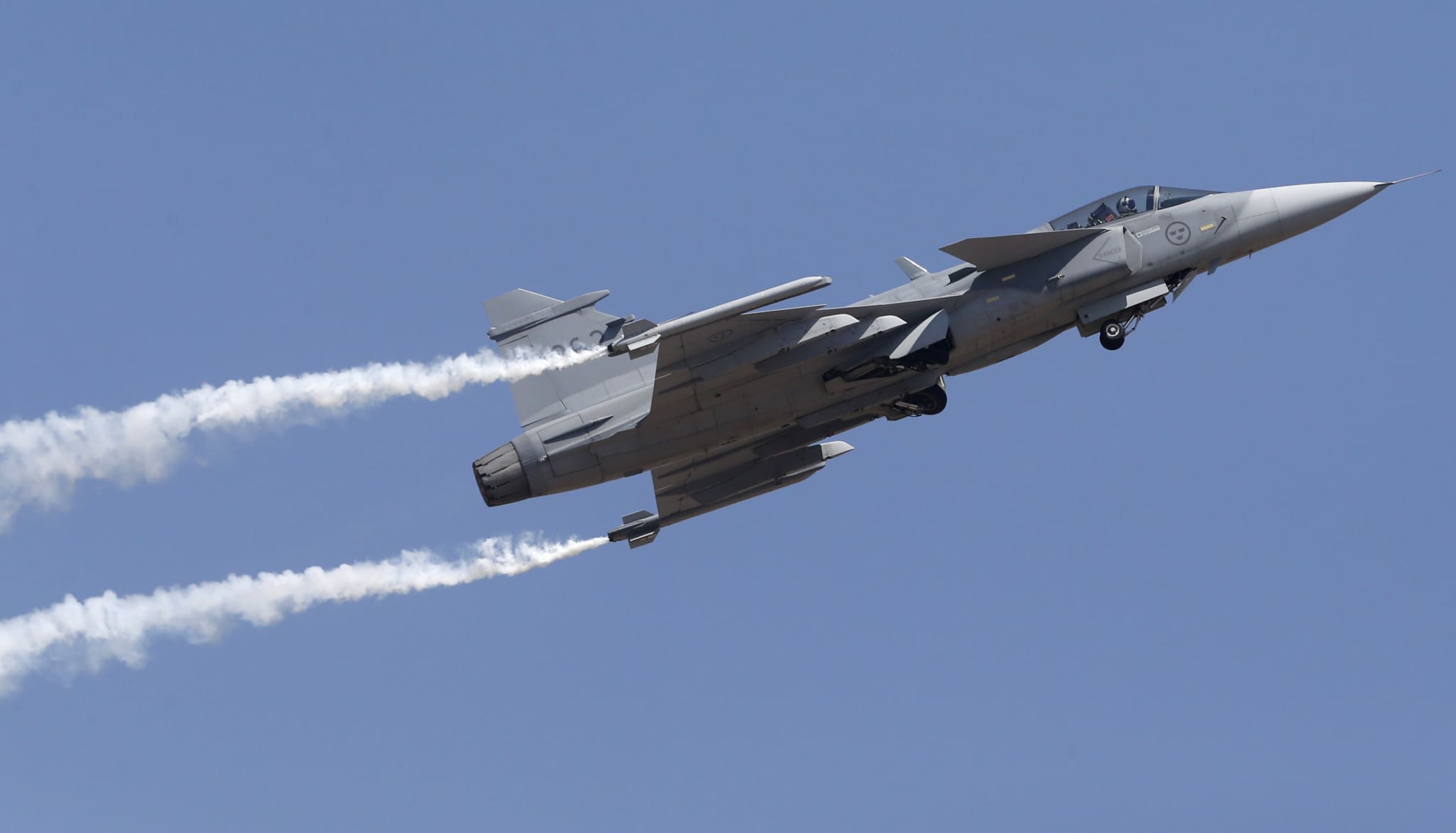The Hungarian Ministry of Defense has released further details about its intention to refurbish the country’s existing fleet of fighter jets, indicating precisely what the modernization work will entail.
In a press release issued this week, government Commissioner for Defense Development Gáspár Maróth explained that the Hungarian Air Force’s existing Gripen fighter jets will be equipped with Iris-T short-range infrared homing air-to-air missiles, replacing the older AIM-9 Sidewinders widely used among NATO forces.
Maróth revealed that the contract with German arms manufacturer, Diehl, which will produce the missiles, was signed on Friday.
The Iris-T is a state-of-the-art wing-mounted missile with Mach 3 capability, outclassing its predecessor in every respect. It is certainly not the budget-saving option, however, costing over $400,000 per unit. Perhaps one of the greatest benefits of this weapon system is that it will be compatible with the NASAMS medium range air-defense system that Hungary has ordered from the United States.
The planes will also be equipped with Meteor beyond the visual range missiles developed by the MBDA European defense consortium. The Mach 4 capable missiles have a maximum range of 200 kilometers and will set the taxpayer back $2.2 million per unit.
With the acquisition of the two new missiles, the Hungarian Air Force will regain a capability lost with the withdrawal of the Russian made Mig-29 jets and its R-73 missiles, namely the helmet mounted aiming device and capacity to lock the target after the missile has been released. With the Iris-T, the Gripens can shoot down an enemy jet flying behind the plane.
For the Meteor missiles, Hungarian pilots will receive modern upgrades for their helmets that will include the latest aiming device compatible with the weapons. The jets will also receive a significant software upgrade that will bring them up to MS20 Block II standards. The MS20 Block II contains an onboard radio locator, that Jonas Hjelm, vice president of Saab Defence, has indicated can extend detection fields by as much as 70 percent, and can detect much smaller targets than current radars. This is still a step behind modern AESA (Active Electronically Scanned Array) radars, but would represent a huge capability jump for the current Gripens.
Hungary currently operates 14 Gripen C/D variants through a leasing agreement with Sweden’s Saab Aviation that is due to expire in 2026, meaning the aircraft will become the property of the Hungarian Air Force. In the current global economic situation, it would not be prudent to get rid of the fourth generation, but very capable jets. Most observers have expected Hungary to buy the U.S.-made fifth-generation stealth capable F-35s as a replacement, but the costs would have meant cuts in other parts of the Hungarian defense forces.
Poland had paid $4.6 billion for their fleet of 32 F-35s, meaning one would need to spend $150 million on a single aircraft, that includes training, ground equipment, etc. That would represent 0.1 percent of Hungary’s GDP per aircraft, which is something that its recovering economy could not afford.
To replace its current fleet of Gripens, Hungary would have to pay over $2 billion, plus maintenance costs. A single helmet for the F-35 costs $400,000. It would seem that Hungary will skip the fifth generation fighter jets altogether, and eventually replace its current fleet with the sixth generation, which is expected to be in production around the end of the decade.
However, with the new software upgrades and missiles, the Hungarian Gripens will receive capabilities, that apart from Poland, few of its neighbors will possess.





